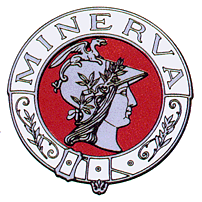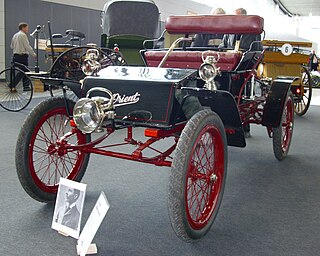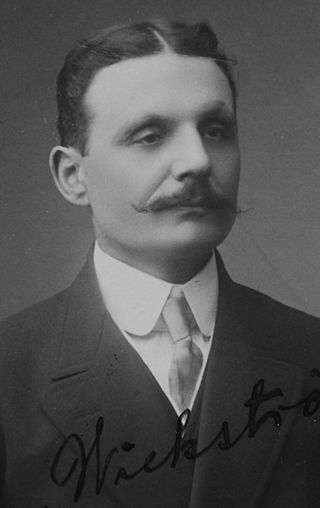Related Research Articles

DKW was a German car- and motorcycle-marque. DKW was one of the four companies that formed Auto Union in 1932 and thus became an ancestor of the modern-day Audi company.

Bajaj Auto Limited is an Indian multinational automotive manufacturing company based in Pune. It manufactures motorcycles, scooters and auto rickshaws. Bajaj Auto is a part of the Bajaj Group. It was founded by Jamnalal Bajaj (1889–1942) in Rajasthan in the 1940s.

Suzuki Motor Corporation is a Japanese multinational mobility manufacturer headquartered in Hamamatsu, Shizuoka. It manufactures automobiles, motorcycles, all-terrain vehicles (ATVs), outboard marine engines, wheelchairs and a variety of other small internal combustion engines. In 2016, Suzuki was the eleventh biggest automaker by production worldwide. Suzuki has over 45,000 employees and has 35 production facilities in 23 countries, and 133 distributors in 192 countries. The worldwide sales volume of automobiles is the world's tenth largest, while domestic sales volume is the third largest in the country.

Minerva was a Belgian firm active from 1902 to 1938 and a manufacturer of luxury automobiles. The company became defunct in 1956.

NSU Motorenwerke AG, or NSU, was a German manufacturer of automobiles, motorcycles and pedal cycles, founded in 1873. Acquired by Volkswagen Group in 1969, VW merged NSU with Auto Union, creating Audi NSU Auto Union AG, ultimately Audi. The name NSU originated as an abbreviation of "Neckarsulm", the city where NSU was located.

Wanderer was a German manufacturer of bicycles, motorcycles, automobiles, vans and other machinery. Established as Winklhofer & Jaenicke in 1896 by Johann Baptist Winklhofer and Richard Adolf Jaenicke, the company used the Wanderer brand name from 1911, making civilian automobiles until 1941 and military vehicles until 1945.

Laurin & Klement was a Czech automobile, motorcycle and bicycle manufacturing company founded in 1895 in Mladá Boleslav, Kingdom of Bohemia by automotive pioneers Václav Laurin and Václav Klement. Car production commenced in 1905, and the company soon became the largest car manufacturer in Austria-Hungary. It was acquired by industrial conglomerate Škoda Works in 1925 and re-branded as Škoda Auto, which is today the largest car manufacturer in the Czech Republic and a part of the Volkswagen Group.

Waltham Manufacturing Company (WMC) was a manufacturer of bicycles, motorcycles, motorized tricycles and quadricycles, buckboards, and automobiles in Waltham, Massachusetts. It sold products under the brand names Orient, Waltham, and Waltham-Orient. The company was founded in 1893, moving to self-propelled vehicles after 1898.

E. R. Thomas Motor Company was a manufacturer of motorized bicycles, motorized tricycles, motorcycles, and automobiles in Buffalo, New York between 1900 and 1919.

Brennabor-Werke AG was a German manufacturer of infant buggies, bicycles, motorcycles and, for two decades, of powered motor vehicles. It was based in Brandenburg an der Havel and operated between 1871 and 1945.

American Bicycle Company (1899-1903) was an American bicycle company (Trust) led by Albert Augustus Pope. The company was formed to consolidate the manufacturers of bicycles and bicycle parts. In the 1890s the advancements in bicycle design led to unprecedented demand for the new Safety bicycles. The "American Bicycle Company" trust only lasted for three years.
The history of the motorcycle begins in the second half of the 19th century. Motorcycles are descended from the "safety bicycle," a bicycle with front and rear wheels of the same size and a pedal crank mechanism to drive the rear wheel. Despite some early landmarks in its development, the motorcycle lacks a rigid pedigree that can be traced back to a single idea or machine. Instead, the idea seems to have occurred to numerous engineers and inventors around Europe at around the same time.

Fafnir was a German engine and vehicle manufacturer based in Aachen (Prussia). They made a range of cars between 1908 and 1926.

The automotive industry in Pakistan is one of fastest-growing industries in the country, growing by 171% between 2014 and 2018. It accounts for 3% of Pakistan's GDP and employed a workforce of over 3.5 million people as of 2018. Pakistan is the 23rd largest producer of automobiles. Its contribution to the national exchequer is nearly Rs. 50-billion. Pakistan's auto market is among the fastest growing in Asia. 269,792 cars were sold in 2018, but this number declined to 186,716 in 2019 due to austerity measures. In the 1990s and early 2000s, Pakistan had many Japanese cars. With the launch of the first Auto Policy in 2005, Pakistan launched its first indigenous car, Adam Revo. However, after the 2008 elections, the dollar started depreciating, and due to bad governance, many automakers began to halt production, with some exiting Pakistan. Currently, the auto market is dominated by Honda, Toyota, and Suzuki. However, on 19 March 2016, Pakistan passed a second "Auto Policy 2016-21," which offers tax incentives to new automakers to establish manufacturing plants in the country. In response, Renault, Nissan, Proton Holdings, Kia, SsangYong, Volkswagen, FAW, and Hyundai have expressed interest in entering the Pakistani market. MG JW Automobile Pakistan has signed a memorandum of understanding (MoU) with Morris Garages (MG) Motor UK Limited, owned by SAIC Motor, to bring electric vehicles to Pakistan. NLC signed an agreement with Mercedes-Benz to manufacture Mercedes Actros trucks in Pakistan. Pakistan has not enforced any automotive safety standards or model upgrade policies. A few older vehicle models, including the Bolan and Ravi, continue to be sold by Suzuki. On 8 July 2021, Jolta Electric launched the production of electric motorcycles.

The automotive industry in Bangladesh is the third largest in South Asia.

Malicet & Blin (M.A.B.) was a French manufacturer of bicycles, automobiles, auto components, and aeronautical engines from 1890 until 1925. It expanded into the motor industry in 1897 and aero engines in 1914. They produced both incomplete and entire cars for the UK market, which were badged as Marlborough.

John Wickström was a Finnish-Swede engineer and entrepreneur.
References
- 1 2 Flory, Jr., J. "Kelly" (2008). American Cars, 1946–1959 Every Model Every Year. McFarland & Company, Inc., Publishers. ISBN 978-0-7864-3229-5.